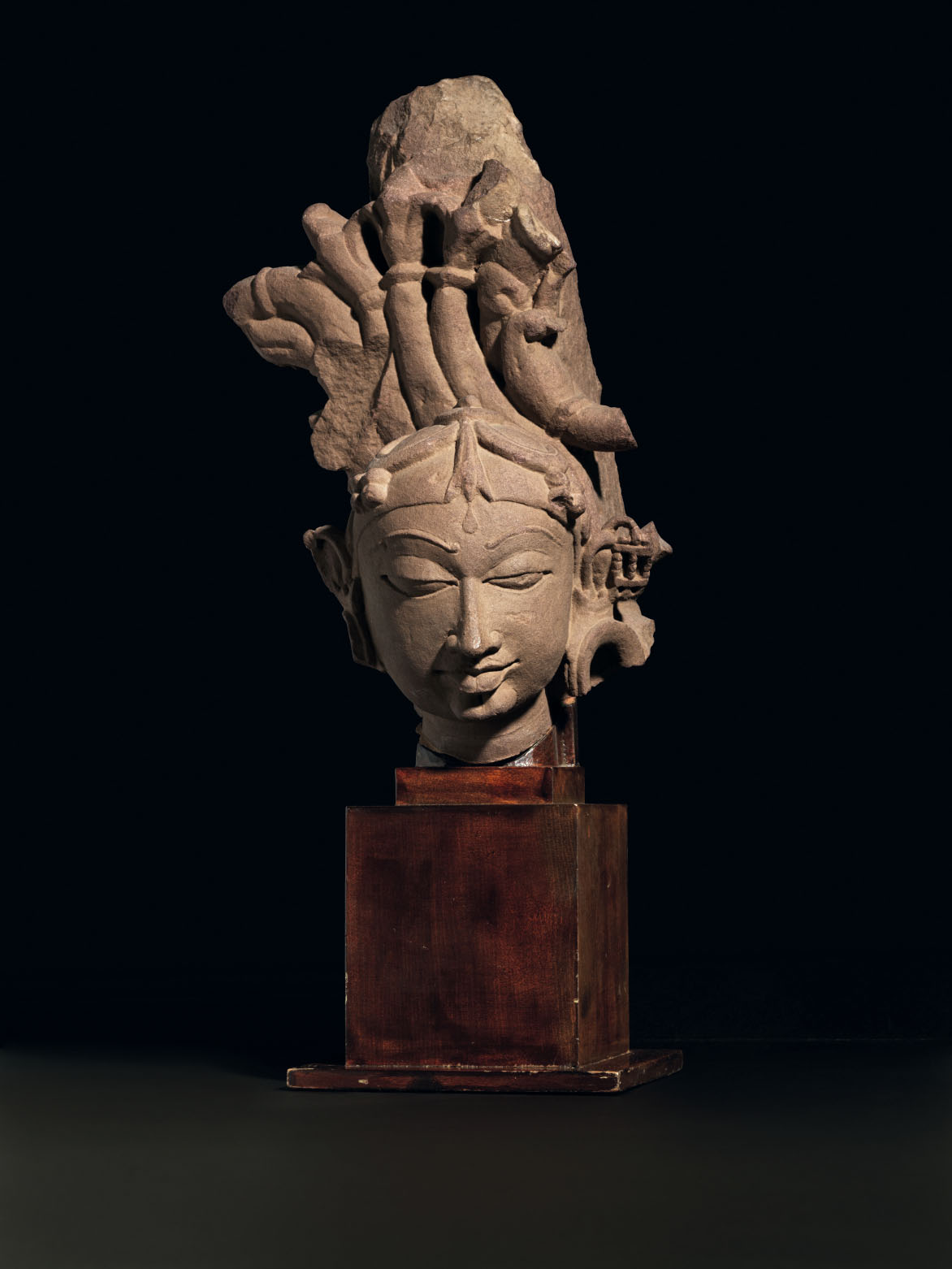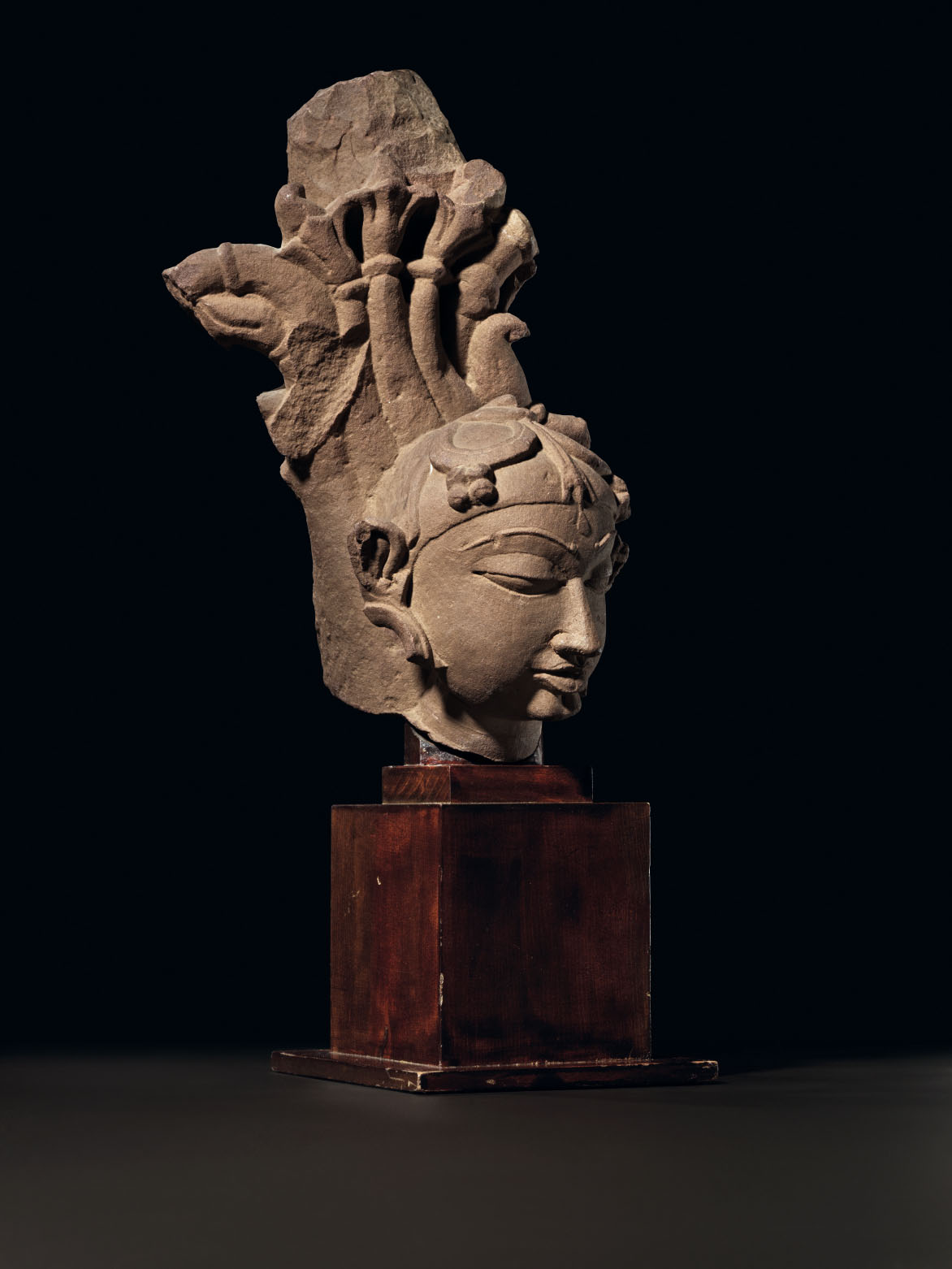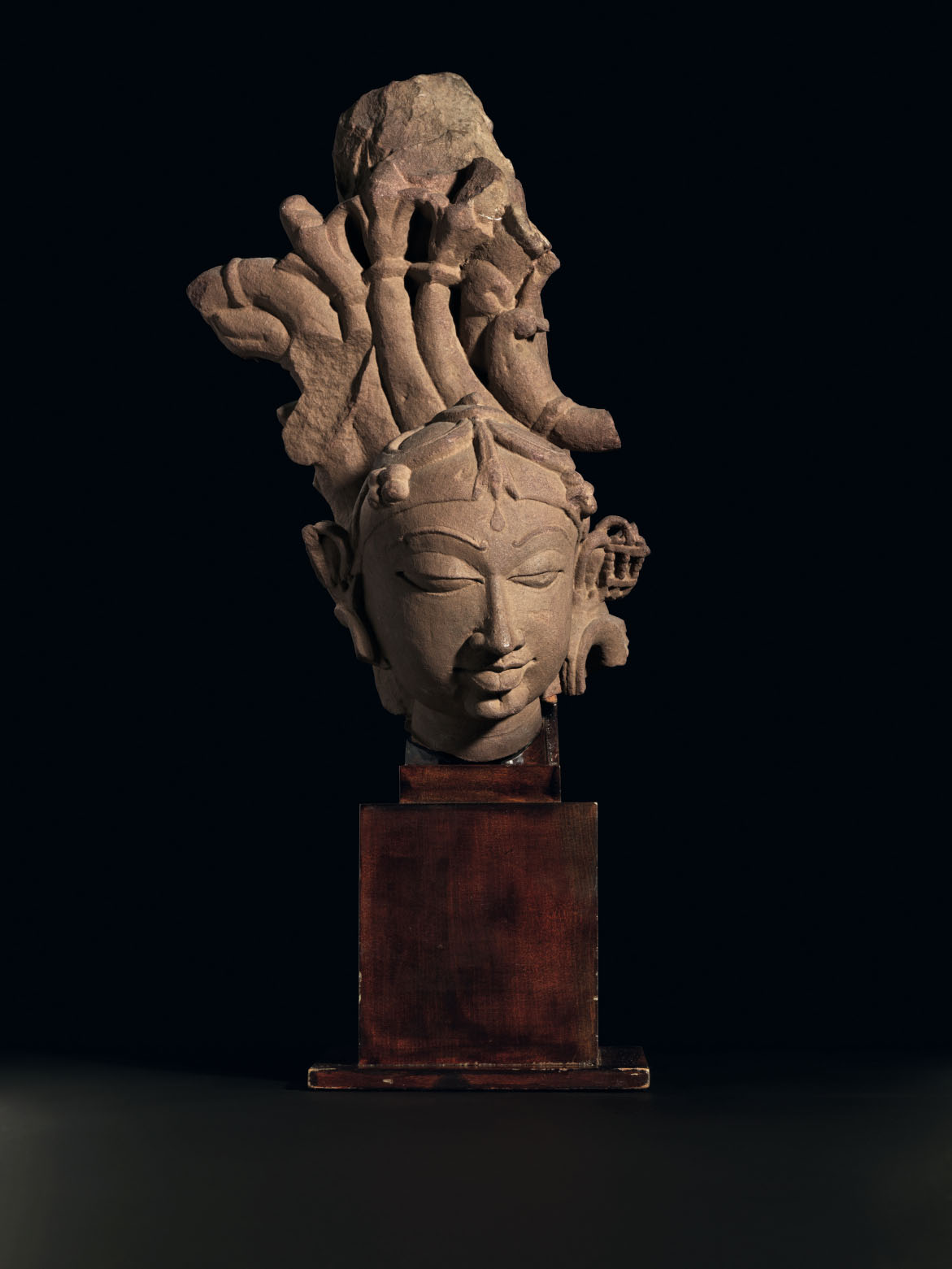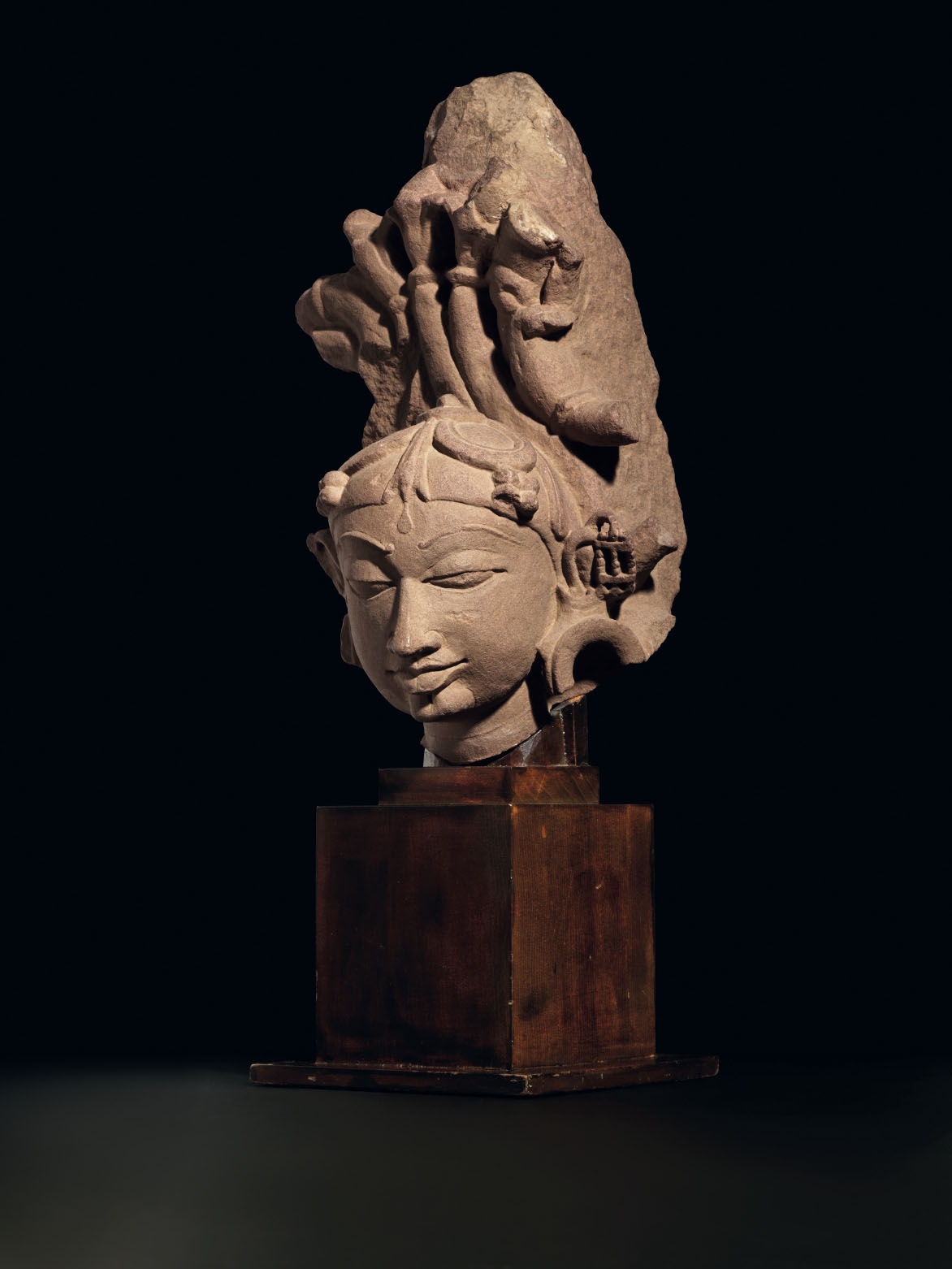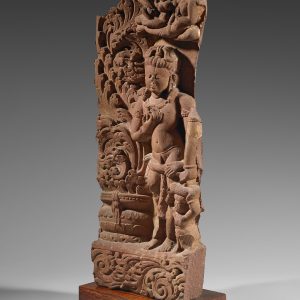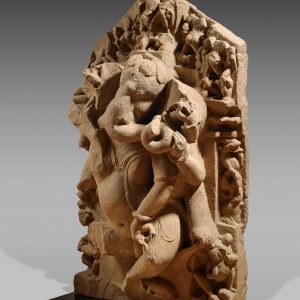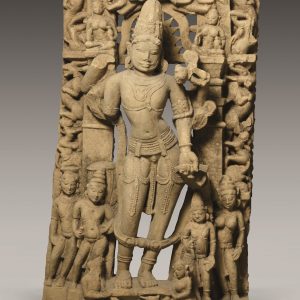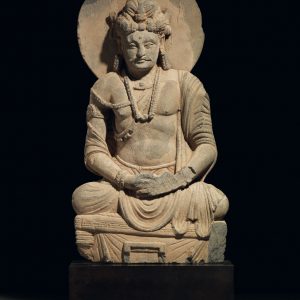Head of Devatā
Sandstone
India (Rājasthān or Madhya Pradesh)
11th century, Gurjara-Pratihāra dynasty (6th-11th century)
H. 28 cm
Description
In Northern India, in medieval times (9th-12th c), temples were adorned with secondary goddesses, both on their facades and inside the main mandapa. Infinitely seductive supernatural beings, their purpose was to entertain the gods in the paradise of Indra. Ancient texts make a distinction between the Apsarā, the Devāṅganā, the Devakanyā and the Surasundarī, among others. The charming face seen here cannot be identified because it has no iconographic context. However, in the upper part there are vegetal crosiers that might link our beauty to the Śālabhaṅjikā, rustic deities of ancient India, also found in decorative elements from medieval times.
The characteristic facial traits – a pointed nose, almond-shaped eyes, sharply-defined eyebrows and full lips – are found throughout the vast Gurjara-Pratihāra empire, as well as in the lands of their vassals and rivals, such as the Candella of Khajurāho. In this vast geographic zone, sandstone quarries offer a wide spectrum of colors, ranging from the lightest beige to a dusky pink, and that makes it impossible to determine the provenance of such a fragment. Note the pendeloque on the headdress, comparable to that of a Śālabhaṅjikā from the Musée National des Arts Asiatiques – Guimet (inv. Ma 3176).
Provenance: Private western collection, since 1999

